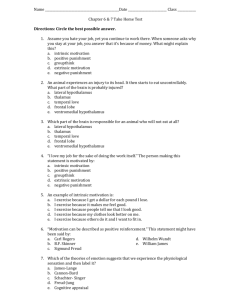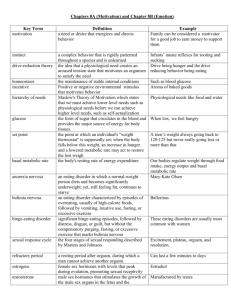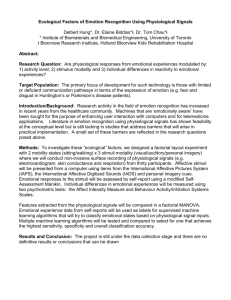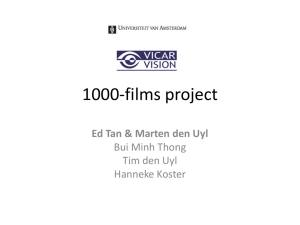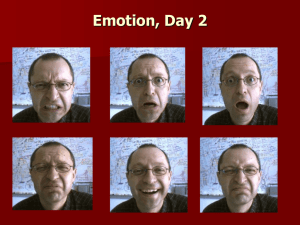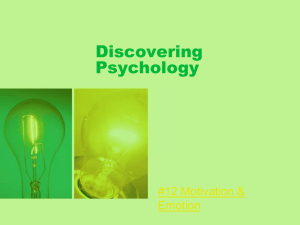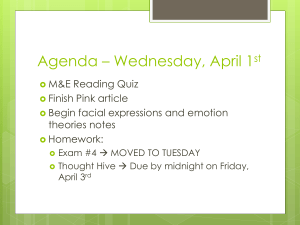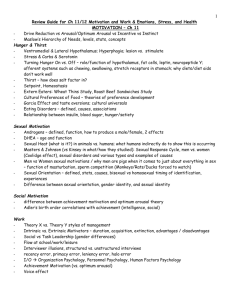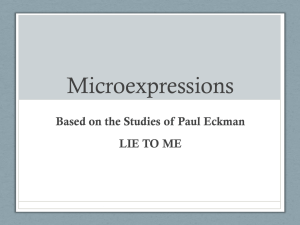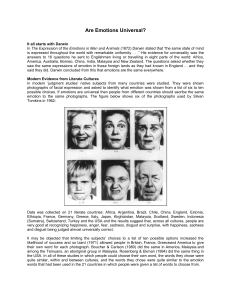Motivation-Emotion Practice MC
advertisement
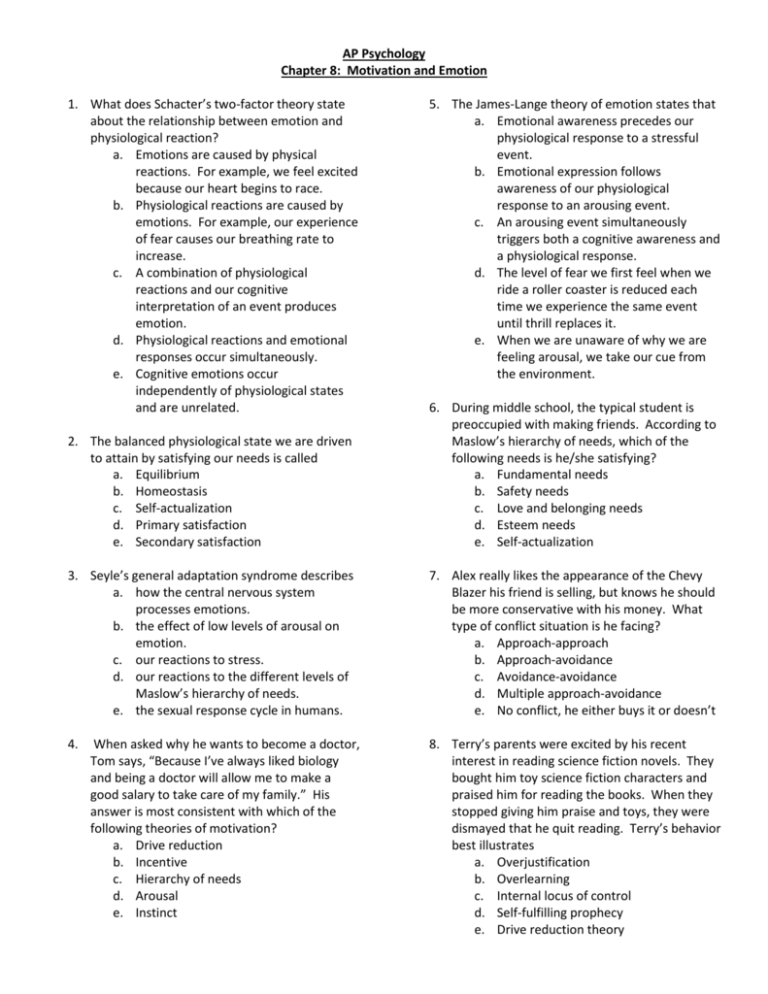
AP Psychology Chapter 8: Motivation and Emotion 1. What does Schacter’s two-factor theory state about the relationship between emotion and physiological reaction? a. Emotions are caused by physical reactions. For example, we feel excited because our heart begins to race. b. Physiological reactions are caused by emotions. For example, our experience of fear causes our breathing rate to increase. c. A combination of physiological reactions and our cognitive interpretation of an event produces emotion. d. Physiological reactions and emotional responses occur simultaneously. e. Cognitive emotions occur independently of physiological states and are unrelated. 5. The James-Lange theory of emotion states that a. Emotional awareness precedes our physiological response to a stressful event. b. Emotional expression follows awareness of our physiological response to an arousing event. c. An arousing event simultaneously triggers both a cognitive awareness and a physiological response. d. The level of fear we first feel when we ride a roller coaster is reduced each time we experience the same event until thrill replaces it. e. When we are unaware of why we are feeling arousal, we take our cue from the environment. 2. The balanced physiological state we are driven to attain by satisfying our needs is called a. Equilibrium b. Homeostasis c. Self-actualization d. Primary satisfaction e. Secondary satisfaction 6. During middle school, the typical student is preoccupied with making friends. According to Maslow’s hierarchy of needs, which of the following needs is he/she satisfying? a. Fundamental needs b. Safety needs c. Love and belonging needs d. Esteem needs e. Self-actualization 3. Seyle’s general adaptation syndrome describes a. how the central nervous system processes emotions. b. the effect of low levels of arousal on emotion. c. our reactions to stress. d. our reactions to the different levels of Maslow’s hierarchy of needs. e. the sexual response cycle in humans. 7. Alex really likes the appearance of the Chevy Blazer his friend is selling, but knows he should be more conservative with his money. What type of conflict situation is he facing? a. Approach-approach b. Approach-avoidance c. Avoidance-avoidance d. Multiple approach-avoidance e. No conflict, he either buys it or doesn’t 4. 8. Terry’s parents were excited by his recent interest in reading science fiction novels. They bought him toy science fiction characters and praised him for reading the books. When they stopped giving him praise and toys, they were dismayed that he quit reading. Terry’s behavior best illustrates a. Overjustification b. Overlearning c. Internal locus of control d. Self-fulfilling prophecy e. Drive reduction theory When asked why he wants to become a doctor, Tom says, “Because I’ve always liked biology and being a doctor will allow me to make a good salary to take care of my family.” His answer is most consistent with which of the following theories of motivation? a. Drive reduction b. Incentive c. Hierarchy of needs d. Arousal e. Instinct 9. Which of the following most accurately reflects our current understanding of basic facial expressions? a. Facial expressions are universally recognized and displayed by all cultures. b. Anger is easily interpreted as a facial expression by most cultures and displayed by all in similar situations. c. Facial expressions are universally recognized, but highly variable in how they are displayed. d. Cultures vary in their interpretation and display of the six most common facial expressions. e. Facial expressions are learned through modeling of basic facial expressions by parents. 10. Selection of moderately challenging tasks characterizes the behavior of people who have a a. Fear of failing b. High need for achievement c. Fear of success d. Low need for achievement e. Inferiority complex

